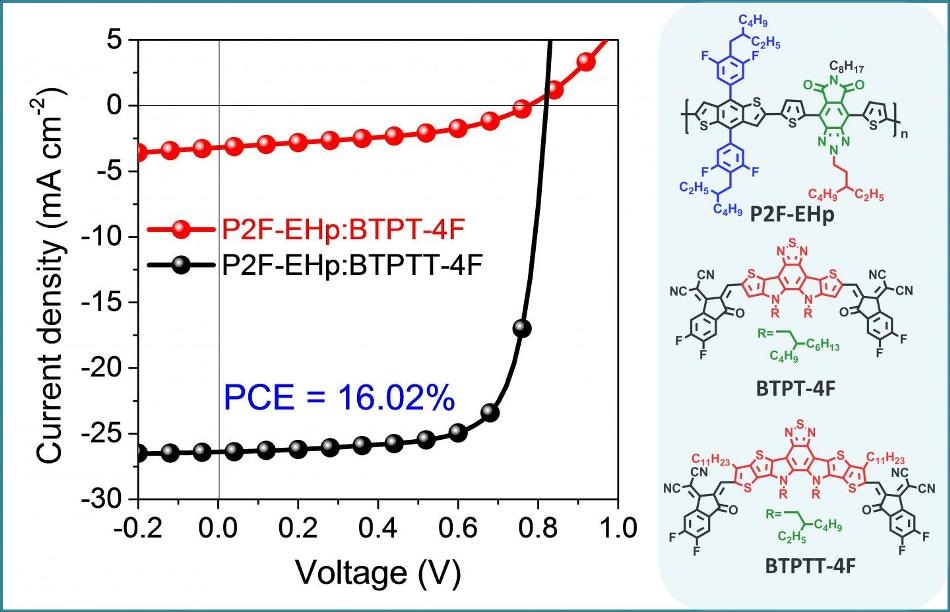Mar 19 2019
Organic solar cells (OSCs) have garnered particular interest from both academic and industrial communities as a prospective technology for renewable energy. One of the key challenges to stimulate practical applications of OSCs is their less competitive power conversion efficiency than that of the equivalent photovoltaic technologies such as CIGS, inorganic silicon, or perovskite solar cells.
 The J-V characteristics for OSCs based on P2F-EHp:BTPT-4F and P2F-EHp:BTPTT-4F; the chemical structures of active layer components. (Image credit - ©Science China Press)
The J-V characteristics for OSCs based on P2F-EHp:BTPT-4F and P2F-EHp:BTPTT-4F; the chemical structures of active layer components. (Image credit - ©Science China Press)
The photovoltaic performance of bulk-heterojunction OSCs is defined by short-circuit current density, open-circuit voltage, and fill factor. The ideal performances require advanced pair of the electron-donor and electron-acceptor in the light-harvesting layer, which should have complementary absorption profiles, outstanding miscibility, and suitable frontier molecular orbital energy levels. In particular, for the electron-donor materials, the deep highest occupied molecular orbital (HOMO) energy level is appreciated a lot as it is advantageous for open-circuit voltage; but, it may negatively impact charge transfer when pairing with acceptors having shallow HOMO levels.
Quite recently, Professor Yong Cao’s group in South China University of Technology showed an unparalleled power conversion efficiency of more than 16% for single-junction OSCs. This extraordinary photovoltaic performance is realized based on a home-made wide-bandgap polymer P2F-EHp, which has a suitable HOMO energy level and can develop complementary absorption profile and ideal morphology of the bulk-heterojunction photoactive layer with a newly emerging non-fullerene acceptor. Specifically, this electron-donating polymer, which has an imide-functionalized benzotriazole (TzBI) unit, is adaptable in matching with different types of electron-acceptors, and therefore holds great potential for creating high-performance OSCs.